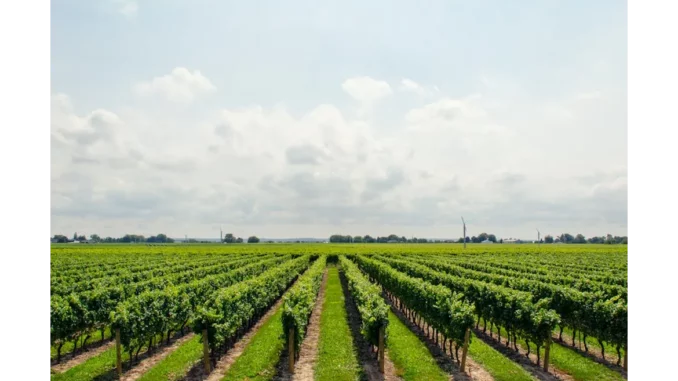
The Art of Wine Selection: A Guide to Finding the Perfect Bottle
Embarking on a journey into the world of wine can be akin to exploring a captivating art form. Whether you’re a seasoned aficionado or a curious novice, the realm of wine offers a tapestry of choices and subtle nuances. To navigate this landscape successfully, it’s imperative to adopt a discerning approach, ensuring that each purchase aligns with your tastes and budget while maintaining the utmost quality. Here’s an expertly curated guide to elevate your wine-buying experience.
1. Discover the Legacy of Producers and Regions
In the illustrious world of wine, understanding the producer and region is paramount. Celebrated wine locales such as Bordeaux, Napa Valley, and Tuscany are renowned for their distinctive terroirs and time-honoured winemaking traditions. These regions promise exceptional quality, a testament to their unique environmental and cultural influences. Similarly, wines from esteemed producers often reflect a commitment to excellence. For those unacquainted with a particular provenance, a brief exploration into its heritage can offer profound insights into the wine’s potential profile and calibre.
2. Evaluate the Significance of Vintage Years
The vintage year, indicating when the grapes were harvested, is a critical determinant of a wine’s essence and character. Certain years stand out for their extraordinary harvests, shaped by fortuitous weather conditions. This is particularly relevant when investing in premium wines from weather-sensitive regions such as Burgundy or Champagne. For everyday selections, while the vintage year may hold less sway, it remains a factor worth pondering.
3. Decode the Wine Label’s Secret Language
A wine label is akin to a canvas, rich with information about the bottle’s contents. Details such as grape variety and alcohol content are often disclosed, offering a glimpse into the wine’s nature. Labels adorned with “Estate Bottled” signify that the grapes were both grown and bottled by the winery, an assurance of meticulous quality control. Additionally, symbols such as Appellation d’Origine Contrôlée (AOC), DOCG (for Italian wines), or AVA (American Viticultural Area) serve as markers of region-based quality standards.
4. Assess the Wine’s Storage Provenance
The integrity of a wine is intimately linked to its storage history, particularly for reds and those destined for aging. When selecting a bottle, inquire about its storage conditions. Optimal storage involves maintaining a consistent temperature, ideally around 55°F, shielded from light and vibration. Purchasing from reputable establishments that uphold these standards is essential for a rewarding acquisition.
5. Detect Potential Signs of Bottle Distress
A thorough inspection of the bottle can avert future disappointment. Scrutinise the cork; if it protrudes, the wine may have been exposed to excessive heat. Similarly, any leakage past the cork could signal temperature fluctuations or a compromised seal. While sediment is customary in mature reds, pronounced cloudiness may indicate spoilage. Should you encounter such anomalies, consider alternative options or seek clarification regarding the wine’s storage history.
6. Balance Price with Perceived Value
While price can occasionally reflect quality, it is not an infallible indicator. Affordable wines can be delightful, while expensive selections may not always justify their cost unless intended for collection or aging. Seek out value-driven wines with high ratings from reputable sources, as they often deliver exceptional quality at a reasonable price. Additionally, be mindful of discounts on lesser-known yet reputable brands, as hidden gems abound.
7. Navigate Online Wine Purchases with Caution
The digital marketplace offers the convenience of online wine shopping, yet caution is advised. Ensure you purchase from trusted retailers to guarantee authenticity and quality. A favourable return policy is crucial should the wine arrive spoiled or damaged. During warmer months, prioritise retailers that offer temperature-controlled shipping to preserve the wine’s integrity.
8. Seek Sage Recommendations
Do not shy away from soliciting expert advice. Whether you have particular preferences or seek general guidance, knowledgeable staff can be invaluable. Establishments with wine experts can tailor suggestions based on your taste, budget, and occasion, ensuring you depart with an impeccable selection.
9. Consult Wine Ratings and Reviews
Consulting reviews from esteemed wine critics or sources can provide a trustworthy assessment of a wine’s quality and flavour profile. Websites, wine magazines, and online platforms with consumer feedback are excellent resources, especially when exploring new varietals or brands. Aim for wines with consistent high ratings, but always remember that personal taste reigns supreme.
By embracing these expert strategies, you can make informed decisions and enhance your wine experiences, selecting bottles that resonate with your palate and expectations. Delve into the world of wine with confidence, equipped with knowledge and curiosity, to uncover selections that promise both exceptional value and enjoyment.


Be the first to comment